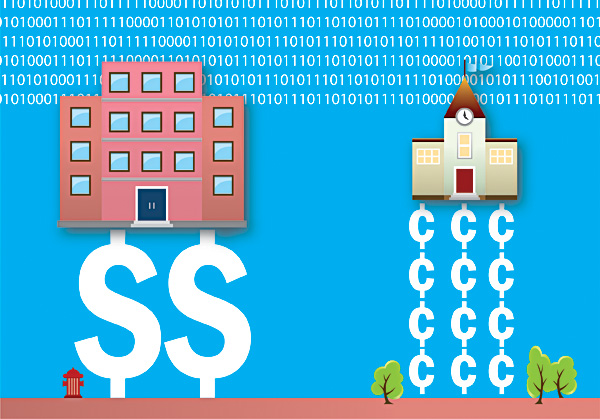
Over the past few months, the American Library Association (ALA) and its president, Maureen Sullivan, have taken a hard stance with major publishers on the issue of ebooks in libraries. ALA’s attention has been directed at the so-called “big six,” some of whom still refuse to sell ebooks to libraries. While there isn’t much call for a hardline approach with small, independent publishers of K–12 ebooks, there’s one issue I’d like to address.
Author Christopher Harris has created a PDF detailing the digital content pricing challenges faced by small, rural schools like the districts he serves in the Genesee Valley Educational Partnership in Western New York.
Under the building- or site-based pricing terms that many K–12 publishers use, the small, rural school districts that I serve are being overcharged for digital content. So these districts—with an average size of 1,100 students and less than half the budget of the average New York school district—are, in effect, subsidizing the state’s large, wealthy, suburban systems, which are purchasing the same content at the same cost per building.
We aren’t the only ones who are paying more than our fair share. According to the United States Census Bureau, about half of our nation’s school districts have fewer than 5,000 students; but our collective voice is small and our individual impact on the market is even smaller.
Publishers are being challenged as well. In the days before ebooks exploded onto the scene, publishers expected to sell lots of print books to lots of schools. Big schools and small ones, wealthy and poor, if they wanted the content, they bought the book. And it didn’t matter if the shelf the book sat on was faded plywood or gleaming mahogany; only one student at a time could read a print title. In the digital world, this has changed. Our publisher partners have been forward thinking enough to sell us content with unlimited, simultaneous access. This deserves a huge thank-you—and a second look at the economics of this model.
Digital content is being sold at the building level, but often without consideration for the size of that building. For example, my region has 22 small districts with a total of 54 schools. When content is priced by building, our region ends up being charged as much as neighboring systems with almost twice as many students, but a comparable number of buildings. We need a new way to look at pricing content that considers not buildings, but the student population therein.
One solution might be to consider the average school building size for each state. The National Center for Educational Statistics (NCES) publishes lists of average elementary and secondary school sizes that can easily be incorporated into a pricing formula. My region, for instance, has 27 elementary school buildings, but according to NCES, that’s equivalent to 19 elementary schools, according to the New York average. Under an average-school pricing model, we would be charged for 19 elementary schools when looking at a regional purchase.
In the print era, we probably would have bought 37 copies of a book, but they would have been limited to 37 users. With digital content, when the potential use is expanded to an entire school, it’s only fair that the population be considered in pricing. By using a formula based on average-school pricing, we can help ensure equity of access to schools and students in small, rural districts.



